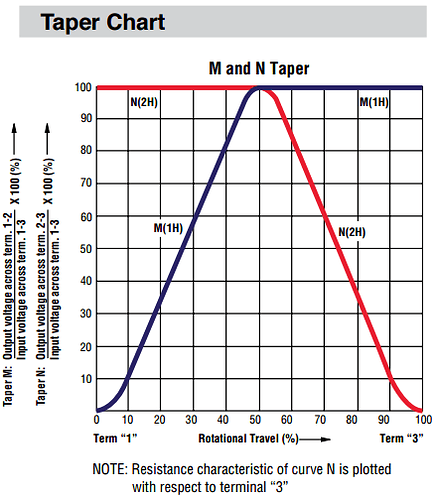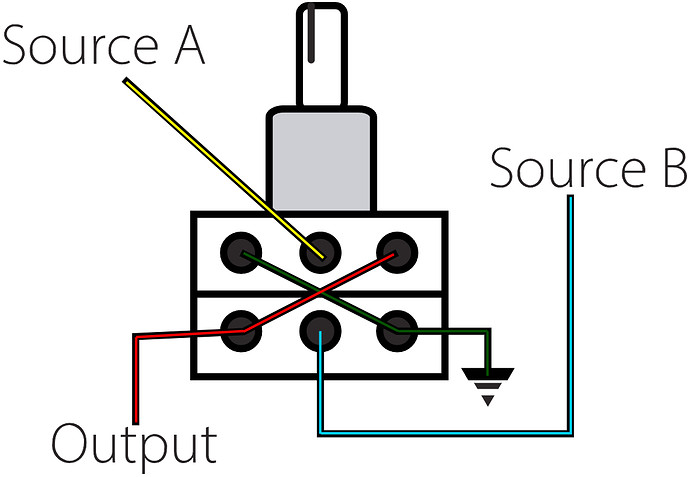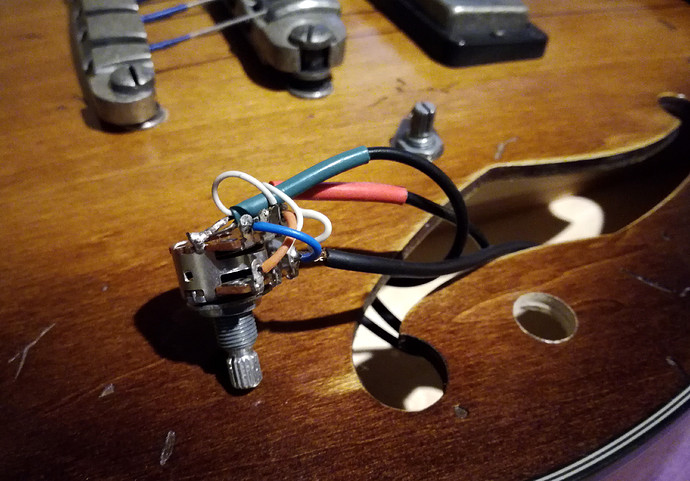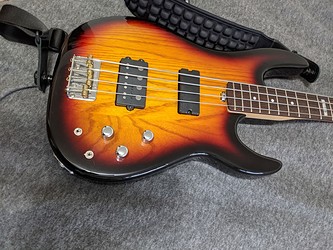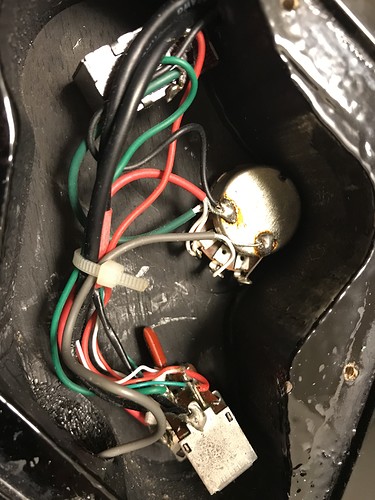I wanted to create a post dedicated to the blend pots.
What is a blend pot ?
A blend pot is used to mix two audio sources into one. On a bass with two pickups (which are two signals = two audio sources), there are often one volume pot per pickup (think Jazz Bass) or a 3-way switch (very “guitar-style”, think MIM Mustang Bass for example). A blend pot is a third solution that allows to mix the pickups with more progressivity than with a basic switch, while keeping a master volume pot.
The blend pot curves : MN pots
A blend pot looks like a “double pot” and a common confusion would be to think it’s like a stereo volume pot. There is a major difference : a blend pot has a very special curve called a MN taper, which looks like this :
This diagram shows that, when the pot is centered, both signals are at 100% and not less (like 50% on a linear stereo pot), exactly like the center position of a 3-way switch. When you turn the pot, one signal decreases while the other one is still at 100%. There is often a detent in the center to let you know that both signals are fully open.
How a blend pot is wired into the electronics of a bass
A blend pot physically looks like two pots stacked together, so there is two distinct tracks. We need to wire them together to make the output be a mix between the two input signals. It is wired like this :
“Source A” and “Source B” are obviously the signal coming from the two pickups. the Output goes to the master volume, exactly like the output of a 3-way switch. so, a blend pot is almost a straighforward replacement to a 3-way switch as it takes the same inputs, same ouput, and does not require any other component.
Here is how the wired pot looks on my Ibanez AGBV200A :
Overall a blend pot can be a cheap and easy way to add intermediate tones on a bass, compared to a 3-way switch. If you have a round-hole 3-way switch (like on a MIM Mustang Bass) it’s a non-destructive mod and it’s totally reversible. Also it can easily look pretty clean and neat :
